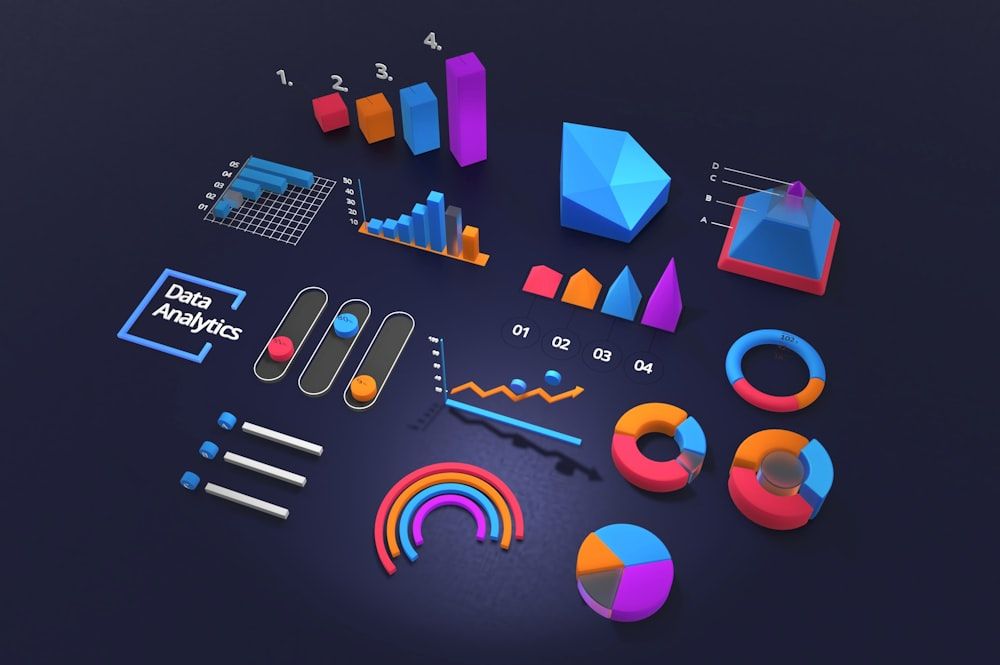
Empowering Business Success: The Synergy of BI and AI in Data Analytics
The imperative for data-driven decision-making across all levels of an organization has reached unprecedented heights lately. Companies are inundated with vast amounts of data from various sources, such as operational systems, ERP, CRM, marketing platforms, and social media. This data is not just valuable; it's the lifeblood of organizations. Effectively utilizing this data is a top priority for executives. But how can businesses harness their data to align with strategic goals effectively? Many are finding the answer lies in the synergy between Business Intelligence (BI) and Artificial Intelligence (AI).
BI Tools: Unveiling Insights from Historical Data
BI tools are designed to collect, secure, organize, administer, and analyze data. They offer visualization capabilities, transforming current and historical data into user-friendly dashboards. These tools empower users to gain insights into their business's performance, fostering data-driven decision-making across the organization.
BI tools employ predefined queries, aggregations, calculations, and analytics to explore, visualize, and report on enterprise-wide information. Techniques like data mining, data cleansing, Extract, Transform, and Load (ETL) processes, and data visualization enable users to monitor key performance indicators (KPIs), identify corporate trends, and gain granular insights. BI tools structure, analyze, and present data in user interfaces through data visualization reporting tools, providing quick access to crucial business information.

BI Use Cases: Explaining What Happened
BI tools excel in diagnostic and descriptive analytics, answering questions like "What happened?" and "Why did it happen?" For instance, they enable marketers to track real-time campaign metrics and measure the success of individual marketing campaigns, offering insights for future campaigns. Sales managers use BI to monitor revenue targets, evaluate sales representatives' performance, and track sales KPIs. Operations departments leverage BI to optimize supply chain processes and ensure efficient system operations.
However, BI tools reach their full potential when combined with predictive and prescriptive analytics or AI.
AI Tools: Pioneering Advanced Analytics
AI, or Artificial Intelligence, is a transformative force in the analytics landscape. It enables machines to learn from experience, adapt to new inputs, and perform tasks with human-like capabilities. AI encompasses various technologies, including machine learning, deep learning, natural language processing, and Large Language Models (LLMs). AI processes and analyzes extensive datasets, uncovering patterns that traditional BI tools may overlook. AI-driven insights facilitate automation, enhance customer experiences, optimize operations, and identify new opportunities for business growth.
AI Use Cases: Predicting and Optimizing
AI's strength lies in its ability to adapt and learn from data. It continually refines its models, improving predictions and adapting to changing market conditions with minimal human intervention. AI can predict customer behavior, recommend products, automate processes, and optimize systems, driving profitability. It can identify purchasing patterns, segment customers for targeted marketing, and enhance customer retention efforts.
Classification models help with market basket analysis, while unsupervised learning models facilitate customer segmentation and recommendation systems. For marketing departments, AI tools provide insights into campaign performance, helping refine strategies. In manufacturing, AI enables predictive maintenance, preventing equipment failures and optimizing operations.

BI and AI Tools: Bridging the Gap
BI and AI tools are distinct yet complementary. While BI focuses on descriptive analytics, AI excels in predictive and prescriptive analytics. BI tools are essential for organizing, analyzing, and visualizing structured and semi-structured data. In contrast, AI is indispensable when handling unstructured or big data from sources like social media.
Synergy of BI and AI: Unlocking New Possibilities
The integration of AI into BI tools has transformed the analytics landscape. Today's BI tools incorporate AI, machine learning, and deep learning capabilities, expanding their analytical horizons. AI-equipped BI tools can provide predictive and prescriptive insights, answering questions like "What will happen?" and "What should we do about it?" This synergy allows organizations to harness the power of data like never before.
AI-driven predictive analytics optimizes various aspects of business operations, from labor management to dynamic pricing. For instance, AI models help determine optimal pricing for highly perishable items, such as airline seats or hotel rooms, by considering factors like supply, demand, seasonality, and even weather conditions. This optimization significantly increases profitability, often covering the initial investments in AI and BI tools.
The Evolution of Analytics: BI and AI Convergence
The convergence of AI and BI tools is evident in the evolution of analytics platforms. Gartner, a leading research firm, recognized the growing importance of advanced analytics, AI, and machine learning in the BI field. Consequently, it renamed its report on BI tools to "Magic Quadrant for Analytics and Business Intelligence Platforms" in 2018. Analytics and AI capabilities became integral to the evaluation of BI platforms.
Today, BI tools incorporate AI seamlessly. For example, Qlik's AutoML feature enhances its software with predictive analytics and explainable AI. AutoML simplifies model generation, making predictions and what-if scenarios accessible through a code-free experience. Other BI vendors are following suit, integrating AI capabilities into their tools to stay competitive.

Photo by Choong Deng Xiang / Unsplash
Unlocking the Potential of Data
The marriage of BI and AI tools empowers businesses to leverage data in unprecedented ways. While BI tools explain historical data, AI tools predict future outcomes and prescribe actions. This combination enhances profitability and positions organizations for success in an increasingly data-driven world.
As AI and BI markets converge, software vendors are racing to create sophisticated, scalable, and user-friendly solutions. Businesses benefit from these advancements, gaining access to powerful tools that enable data-driven decision-making and drive growth. Creating data visualizations and reports for customers has never been easier, thanks to the synergy between data visualization and Generative AI. This transformative synergy is ushering in a new era of data analytics.
Ready to explore your Data's Potential with Onvo?
If you're intrigued by the possibilities of AI-powered data visualization, we invite you to explore further. Visit our website for more information or book a call with us to discover how Onvo can revolutionize your data-driven decision-making.
